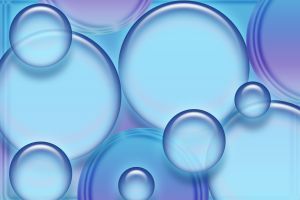Introduction The quest for environmental balance has become an issue for all countries of the world. Many issues exist, some of which cause greater problems than others. Global warming is an ongoing concern the world faces in which a number of different issues have a direct effect upon the climate changes. North America faces challenges, just as other regions, to prevent these environmental issues from causing a larger global problem.
Unfortunately, some environmental issues are easier to detect and solve; others can be more difficult to establish the root cause of the problem and implement a solution. This paper will describe the pesticide misuse and water pollution issues that exist in North America, how they affect the region as a whole, the root causes, and local or external solutions that can be implemented to preserve the North American continent. The paper will also discuss how other regions handle the same type of environmental issues and whether or not the solutions implemented were successful in solving the environmental concerns.
Misuse of Pesticides in North America Pesticides are used North America for a variety of reasons to include protecting crops from insect infestation. Misuse of pesticides can lead to a long-term hazardous effect on humans, animals, and plants if used incorrectly. Soil erosion into water sources such as rivers, lakes and oceans can affect many different water species. Crop and lawn pesticides generally flow into these water sources which in turn can kill the aquatic life. The positive side of pesticides allows the crops in North America to flourish which can be very benefit the agriculture industry economically. Unfortunately, these same pesticides that can save the lives of millions are found and consumed in drinking water used by humans every day (Pros and Cons of Pesticides, 2006). Lack of pesticide use education continues to be a major factor in the root causes of why this deadly chemical is misused. Despite the guidelines that are implemented to distance applications of pesticide from nearby wells and rivers, traces of chemicals are still found in drinking water. Aerial applications may seem to be the most economical way to treat areas; however, research shows that “with aerial application, only 10% reaches the crop and only 0.1%-5% reaches the targeted pest” (Pros and Cons of Pesticides, 2006, ¶10).
Other common misuses of pesticides include not following the directions on the label, applying too much pesticide, or using non-registered pesticides (Safer Pest Control in the Home, 2006). There are laws and guidelines that pest control technicians must follow, but unfortunately there are reported incidents where technicians failed to follow procedures and lives were lost. In some instances allergic reactions can take place even when pesticides are used properly and can cause a severe effect on people and animals. According to the Trade and Environmental Database (Mexican use of Unregistered US Pesticides, 2006),
The EPA ranks pesticide residues as one of the leading health problems in the US. A study conducted by the National Academy of Scientists estimates that in the next 70 years, one million additional cases of cancer in the US will be caused by pest residues (¶6). Strategies to Lessen the Misuse of Pesticide A solution implemented to protect the environment from harmful pesticides in the air and water consists of educating the human population about the chemicals. There are many alternative methods to preventing insects from being a nuisance. One method is controversial, genetic engineering which “can be used to speed up the development of pest- and disease- resistant crop strains” (Miller, 2005, p.528). This process consists of importing insects and bacteria to help control the current insect population (Miller, 2005. p. 528). Genetic engineering can be very cost-effective by saving “…about $25 for every $1 invested in controlling 70 pests in the United States” (Miller, 2005, p.528).
The downside of this process is that it can not be produced on a large scale and the predators do not exterminate the pests as rapidly as conventional pesticides (Miller, 2005, p.528). According to the study ‘Seeds of Doubt’, genetic engineering is not as productive as what was once considered when first implemented in 1996 in North America (GM in America – the Truth, 2006). Another method that is less cost-effective as well as less harmful to the environment is insect birth control which consists of sterilizing the male insect (Miller, 2005, p.528). There are many drawbacks to this very time-consuming process; however, insect birth control has been used in the United States to control the screwworm fly and the Mediterranean fruit fly (Miller, 2005, p. 528).
A similar solution that has been implemented has been with the use of hormone alteration to disrupt the insect’s maturity and reproduction cycle. Sex attractants take more time to kill insects therefore leaving crops vulnerable to large amounts of infestation and destruction. Another form of pest prevention is food irradiation which helps kill bacteria in foods, and lengthens the shelf life of food being sold. Many studies have been conducted to ensure that the small dose of radiation necessary for this form of pest prevention is safe for human consumption (Miller, 2005, p. 529). The solutions mentioned may be implemented within North America. This developed region has the resources necessary to follow through with controlling insects without the use of pesticides. Pesticide Misuse Solutions in Indonesia Indonesia had higher rice crop production by 15% after the country cut pesticide use two-thirds (Miller, 2005, p.525).
This country has few laws protecting the people and animals from overuse of harmful pesticides. In the year 2000 in Inderagiri Hilir in the province of Riau, an attack of pests came from a neighboring town where pesticides were overused. This caused a chain reaction which required the use of more pesticides to exterminate the infestation. Indonesia suffers many different issues; however, one of the leading problems this country faces is “…the government’s failure to regulate pesticide use in a comprehensive manner…” (Riza, 2003,¶7). The issue lies in that there is a lack of laws to control pesticide use; anyone may purchase and use these chemicals. The first step to preventing pesticide misuse in Indonesia is for the government and the pesticide companies to make the public aware of how dangerous the chemicals can be. The second step is to provide more stringent guidelines and laws pertaining to the use of these dangerous chemicals. The government is currently promoting pesticides “as a problem-free solution to weeds and insects” (Riza, M, 2003, ¶5).
The overuse and abuse of pesticides in Indonesia is causing health issues for the human and animal population and species. Thus far the Indonesian government has failed to rectify this problem. Water Pollution in North America Pesticides are one of the many reasons why fresh water pollution exists in North America. Other factors contributing to fresh water pollution are run-off of such substances as fertilizer, livestock manure, infrastructure failure in combination with large amounts of rainfall. An incident that occurred in May 2000 in Walkerton, Ontario left seven Canadians dead after contamination of drinking water by livestock manure. Two thousand more people became sick due to the E coli bacteria found in the community’s water system (Freshwater: North America, 2006, ¶2).
Unfortunately, this incident could have been prevented if precautions had been taken to avoid such a hazard. Much like pesticides, water pollution of any kind can be harmful to both humans and animals. Other root causes of water pollution include farming, flooding, industrial facilities, and in other instances mining. Recreational activities such as boating are another source of water pollution. Clearly oil spills can not only endanger many salt and freshwater species but can alter the biodiversity of the aquatic life around world. According to an article written by Water-Pollution.net (It’s Not So Slick When Oil Ends Up in the Sea, 2006), About 29 million gallons of petroleum enters the oceans off North America each year, shows a new study by the National Research Council. The report finds that about 85 percent of that pollution can be blamed not on massive oil spills, but on the lesser amounts released by airplanes, swept into polluted rivers and from the largest culprits: recreational boats and runoff from the land.(¶1) Water pollution can come from many different sources or just one source. As stated by Miller (2005), “[p]oint sources discharge pollutants at specific locations through drain pipes, ditches, or sewer lines into bodies of surface water” (p.494). This type of source is easier to monitor because of the exact place the source is located (Miller, 2005, p.495).
Nonpoint sources are much more difficult to identify and can come from a number of different starting places. The root causes of water pollution are varied; however, in most instances man plays a large part. Strategies to Lessen Water Pollution There are many strategies that can be implemented to prevent and lessen water pollution in North America. Methods to reduce and prevent surface water pollution are largely in the hands of farmers. Reducing the quantity of fertilizers that run-off is one method. By maintaining crops are enclosed with vegetation this will reduce soil erosion (Miller, 2005, p.509). Using less pesticides and only when necessary as well as implementing more biological pest control as discussed previously will aid in the prevention of surface water pollution. Conservation tillage and altering infrastructure can be beneficial in many cases also. Systematic planning of methods to prevent livestock wastes from entering nearby water sources by building a form of blockade is vital to lessen water pollution in North America. Clearly some oil spills can not be prevented; however, intricate cleanup plans must be established to prevent aquatic loss. By reducing the total amount of hazardous chemicals that are entered into water sources allows the water purification systems more ability to maintain a higher amount of water quality. The Clean Water Act of 1972 has improved water quality in a number of ways. According to Miller (2005), “between 1992 and 2002, the number of Americans served by community water systems that met federal health standards increased from 79% to 94%” (Miller, 2005, p.513).
Many of these strategies have been implemented and have been successful. Finally educating the public about ways to prevent and reduce water pollution is the key to maintaining better water sources throughout North America. Water Pollution Solutions in Ethiopia Ethiopia, a less developed region, struggles with water pollution continuously. The constant droughts make collecting water a difficult task. Unfortunately, many women and children in Ethiopia must walk in some cases 6 hours to find the nearest available water supply. The water supply is contaminated due to lack of better water treatment facilities. The water will become contaminated for several reasons such as human and animal excrement entering the supply, fertilizers from run off during rainfall, and stagnant water becoming a breeding ground for mosquitoes. Recurring droughts are much to blame for the famine, disease, and mortality rate (Ethiopia, 2006). A water quality monitoring system has been established on the Awash River (Environment for Development, 2006 ¶16).
The Norwegian government has assisted with the establishment of small water purification units which are currently helping to purify the water to prevent disease (Ethiopia, 2006). UNICEF has also had a hand in helping this region by distributing water to people in need of safe drinking water (Ethiopia, 2006, ¶3). Unfortunately, droughts continue to instigate water pollution in this region. Conclusion In conclusion it is clear that pesticides misuse and water pollution are two major factors that affect North America negatively.
Pesticides are used to help promote higher yields in crop production; however, overuse and lack of sufficient knowledge about some products can cause detrimental effects on the environment. Pesticides have the potential to pollute water sources which in turn can affect both humans and animals. Strategies to reduce the total amount of pesticides while maintaining an economical balance for farming in North America are easily accessible to farmers.
By implementing these strategies for use of pesticides, water pollution can also be reduced therefore there will be less threat to North American biodiversity. Other regions of the world with similar issues have been discussed as well as strategies that have and can be implemented to prevent misuse of pesticides and issues that arise with water pollution. Undoubtedly if more education regarding environmental issues is available to all regions of the world this would prepare the world for a more sustainable future.
Reference:
- References Environment for Development. (2006). Environmental Protection Agency. Retrieved September 26, 2006, from EPA Web Site: www.epa.gov.et/Pollution_water.htm Ethiopia. (2006). Retrieved October 31, 2006 from UNICEF Web site: www.unicef.org/infobycountry/ethiopia_19258.html Freshwater: North America. (2006). Retrieved October 14, 2006 from Global Environment Outlook Web site: www.grida.no/geo/geo3/english/298.htm GM in America – the truth. (2006). Retrieved October 30, 2006 from Soil Association Web site: www.soilassociation.org/web/sa/saweb.nsf/ed0930aa86103d8380256aa70054918d/a72f34ecca9 It’s Not So Slick When Oil Ends Up in the Sea. (2006). Retrieved September 26, 2006 from Water-Pollution.net Web site: www.water-pollution.net Mexican Use of Unregistered US Pesticides. (2006). Retrieved October 30, 2006 from www.american.edu/TED/mexpest.htm Miller, G.T., Jr. (2005). Living in the environment-principles, connections, and solutions (14th ed.). Australia: Thomson Learning Pros and Cons of Pesticides. (2006). Retrieved October 29, 2006 from ww2.mcdaniel.edu/Biology/eh01/pesticides/pro.consof_pesticides.html Riza, M., (2003). Pesticide policy in indonesia. Retrieved October 30, 2006 from Inside Indonesia Web site: insideindonesia.org/edit75/p26riza.html Safer Pest Control in the Home. (2006). Retrieved October 15, 2006 from pasture.ecn.purdue.edu/~epados/urbanPest/misuse.htm




